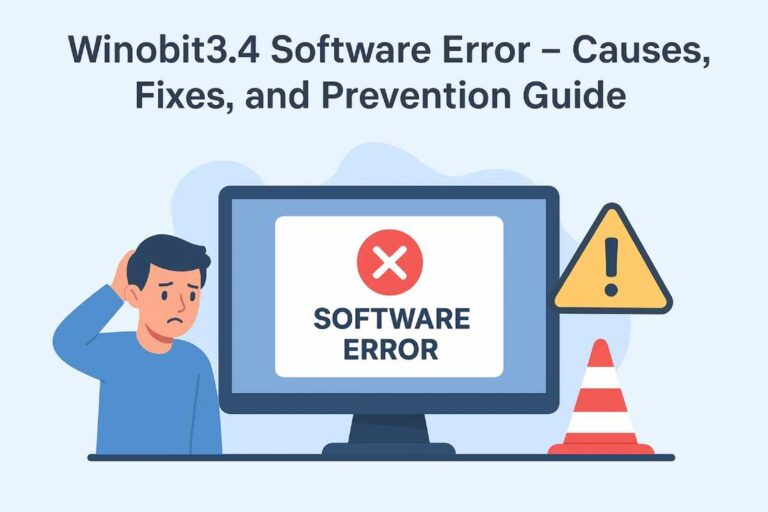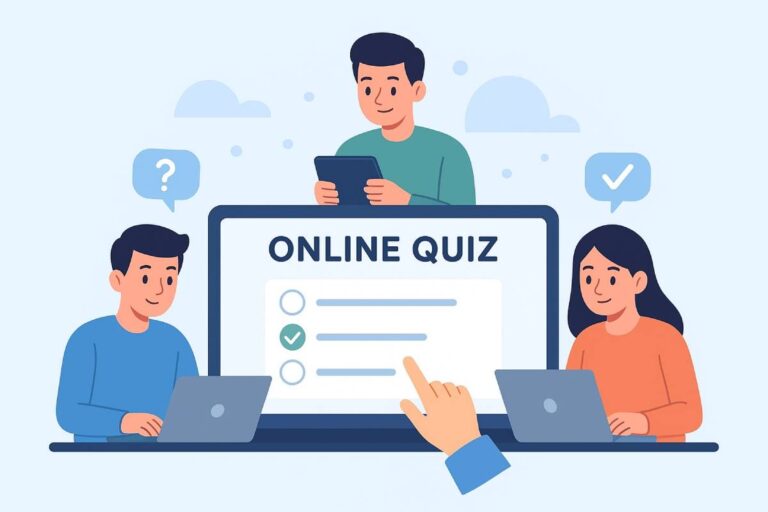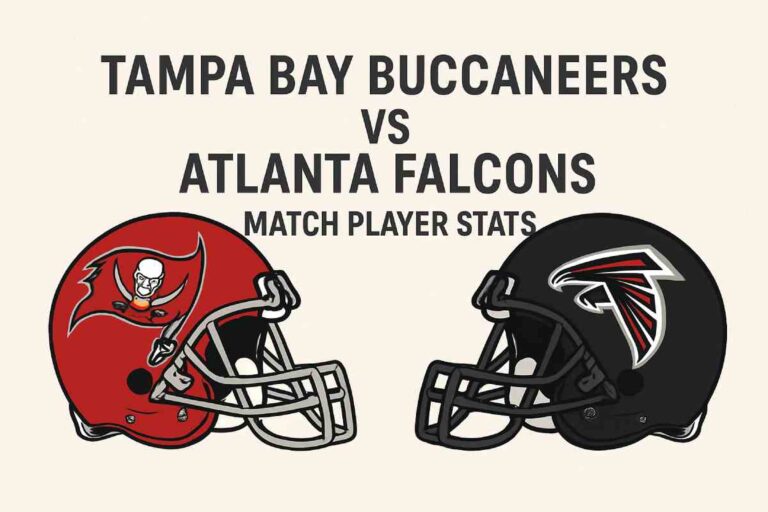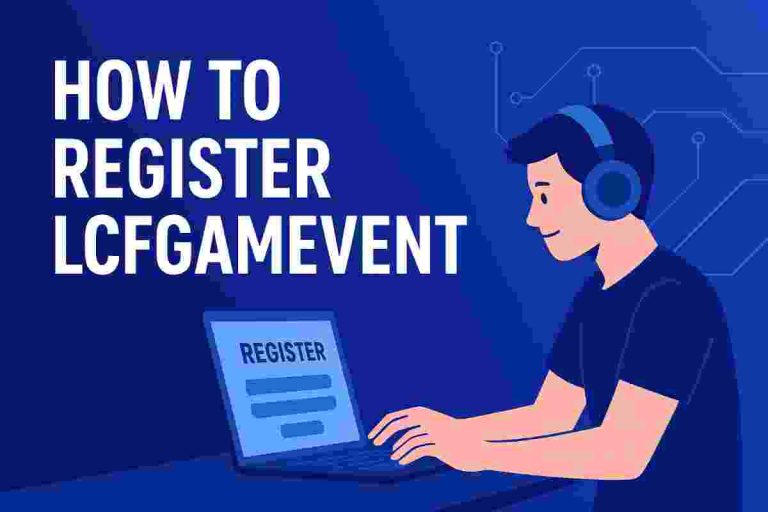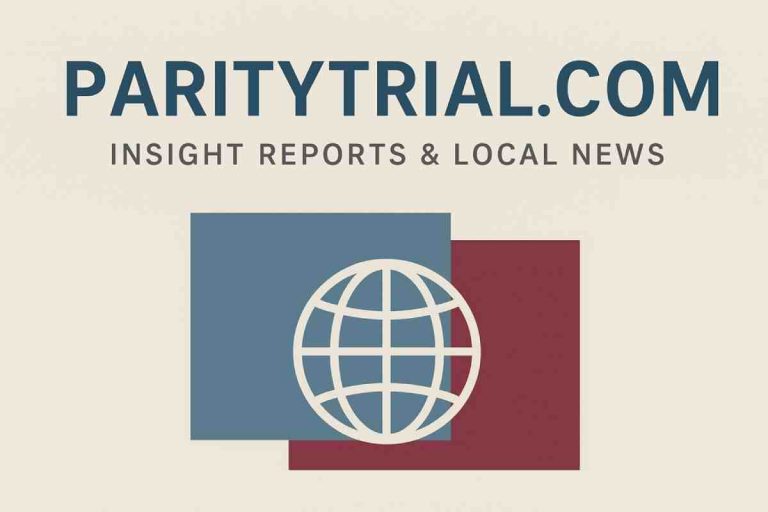Technology makes our lives easier, but software errors can quickly turn convenience into frustration. One such issue that many users have recently encountered is the Winobit3.4 software error. Whether you’re a beginner or a tech expert, understanding why this error occurs and how to fix it can save you hours of confusion.
In this guide, we’ll break down everything you need to know about the Winobit3.4 software error — including its common causes, troubleshooting steps, and preventive tips to avoid future crashes.
Table of Contents
What Is Winobit3.4?
Winobit3.4 is a system optimization and performance enhancement tool that helps users clean junk files, manage startup programs, and boost computer speed. It’s designed to improve the overall performance of Windows PCs by clearing cache files, removing unused registries, and optimizing background processes.
However, like many utility tools, users sometimes face the Winobit3.4 software error, which prevents the application from opening or functioning properly. This can happen due to several internal or system-related reasons.
What Is the Winobit3.4 Software Error?
The Winobit3.4 software error usually appears when the program fails to start or crashes unexpectedly during use. It may show messages such as:
-
“Winobit3.4 has stopped working.”
-
“Error loading Winobit3.4 components.”
-
“Winobit3.4 initialization failed.”
These messages indicate that something has gone wrong either with the installation, system files, or compatibility settings.
Common Causes of Winobit3.4 Software Error
-
Corrupted Installation Files
If Winobit3.4 wasn’t installed properly or was interrupted during setup, some essential files might be missing or damaged. -
Outdated System Drivers
Old or incompatible drivers can conflict with Winobit3.4, especially on updated versions of Windows. -
Windows Registry Issues
Registry errors or invalid entries can disrupt the software’s ability to access necessary components. -
Antivirus Interference
Security programs may block Winobit3.4’s processes, mistaking them for potential threats. -
Software Conflicts
Other optimization tools or third-party cleaners may interfere with Winobit3.4, causing crashes or runtime errors. -
Incomplete Updates
If you recently updated your system or the software, incomplete update files may lead to error messages.
How to Fix the Winobit3.4 Software Error
Below are step-by-step solutions to help you resolve the Winobit3.4 software error:
1. Reinstall the Software
-
Uninstall Winobit3.4 completely from your system.
-
Restart your computer.
-
Download the latest official version from the developer’s website.
-
Install it again and check if the issue persists.
This ensures that missing or corrupted files are replaced with fresh ones.
2. Run as Administrator
Sometimes the software lacks permission to access system-level files.
-
Right-click on the Winobit3.4 shortcut.
-
Select “Run as Administrator.”
This grants the program elevated access and can prevent operational errors.
3. Update Windows and Drivers
Ensure your Windows OS and drivers are up to date:
-
Go to Settings → Windows Update → click Check for Updates.
-
Update display, chipset, and network drivers from Device Manager or the manufacturer’s site.
4. Temporarily Disable Antivirus
Your antivirus might be blocking Winobit3.4 components.
-
Temporarily disable real-time protection.
-
Launch Winobit3.4 and check if it runs properly.
-
If it does, add it to your antivirus exclusion list.
(Note: Only do this if you’re sure the software is legitimate.)
5. Perform a Clean Boot
A clean boot helps identify conflicts with background programs.
-
Press Windows + R, type
msconfig, and hit Enter. -
Under Services, check “Hide all Microsoft services” → then click Disable all.
-
Restart your PC and try launching Winobit3.4.
If it works, one of your third-party applications was causing the issue.
6. Repair Registry and System Files
Corrupted system files can lead to the Winobit3.4 software error.
-
Open Command Prompt as Administrator.
-
Type
sfc /scannowand press Enter. -
Allow Windows to detect and fix damaged files.
You can also use built-in registry cleaners or third-party tools carefully.
Advanced Fixes (For Experienced Users)
If the above methods don’t work, try these advanced options:
-
Reinstall Microsoft .NET Framework:
Many applications rely on .NET to function. An outdated or missing version can cause the error. -
Check Event Viewer Logs:
Use the Windows Event Viewer to identify the exact cause of the crash. -
Compatibility Mode:
Right-click the app → Properties → Compatibility tab → Check “Run this program in compatibility mode for” and select an older Windows version.
Preventing Future Winobit3.4 Errors
-
Always download software from trusted sources.
-
Keep your system and drivers updated.
-
Avoid installing multiple cleaner or optimization tools together.
-
Regularly clear cache and registry errors.
-
Create restore points before updating or modifying system files.
By maintaining a healthy system environment, you can minimize the chances of recurring Winobit3.4 software errors.
When to Contact Support
If the problem persists even after applying all fixes, it might be a deeper technical issue.
-
Contact Winobit’s official support team through their website or help center.
-
Provide details such as your Windows version, error message, and recent system changes.
Support representatives can guide you through specific troubleshooting steps or offer patch updates.
Final Thoughts
The Winobit3.4 software error can be frustrating, but it’s usually easy to fix with the right approach. Most issues stem from outdated files, missing components, or software conflicts. By following the solutions above — from reinstalling the app to updating your system — you can restore smooth functionality in no time.
Always remember: keeping your PC optimized and avoiding unverified downloads is key to preventing similar errors in the future. So next time you face a Winobit3.4 software error, you’ll know exactly what to do!

